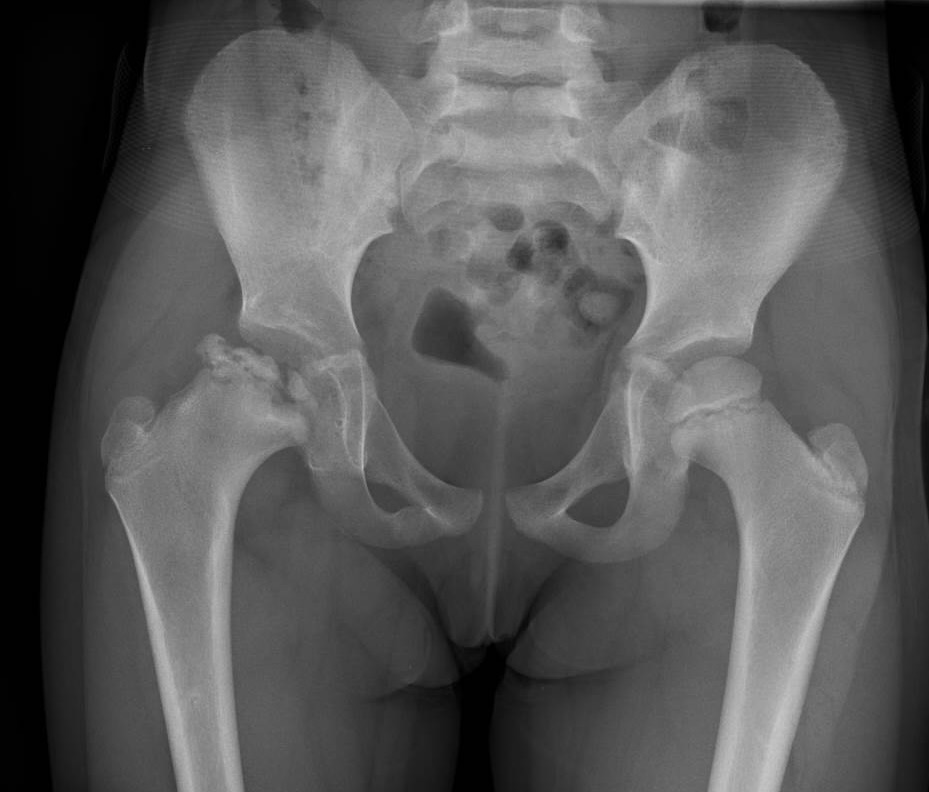What are Petrie Casts?
A Petrie cast may be used by your orthopaedic surgeon to treat Perthes disease soon after your child is diagnosed or at a later stage if it looks like the hip is becoming uncovered.
Petrie casts are long leg plaster casts, from the top of the thigh to the ankle, that are used to hold the legs wide apart. They are applied by an orthopaedic surgeon usually in theatre.
How do Petrie casts help to treat Perthes disease?
A Petrie cast allows the hip to be turned into the joint putting it into a position where it is protected and rested. This adductuted (legs apart) position can assist in reducing inflammation, improve the shape of the hip and prevent further collapse.

How will my child move around while in a Petrie cast?
Your child will most likely become quite independent in standing and walking around your home. A walking aid such as crutches or a walking frame will be helpful for walking short distances. The physiotherapist will train your child how to use a walking aid and recommend the most suitable walking aid for your child. A wheelchair will be necessary for mobility outside your home.
How long will they need to stay on for?
Petrie casts are usually in place for six weeks.
How will my child recover when the Petrie cast is removed?
It is normal for children to initially feel anxious and stiff when the cast is first removed. Swimming and the use of an exercise bicycle are excellent activities to gently reduce stiffness and restore strength around the hip.
Will my child need a Petrie cast on more than one occasion?
Around 50% of children will require only one Petrie cast. However, if the hip remains irritable, or if there is concern regarding the position of the femoral head within the socket, repeat periods in a cast may be helpful.
